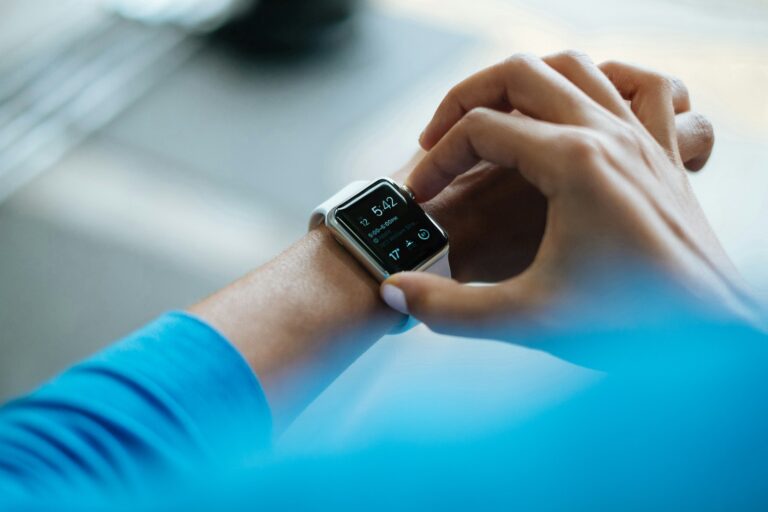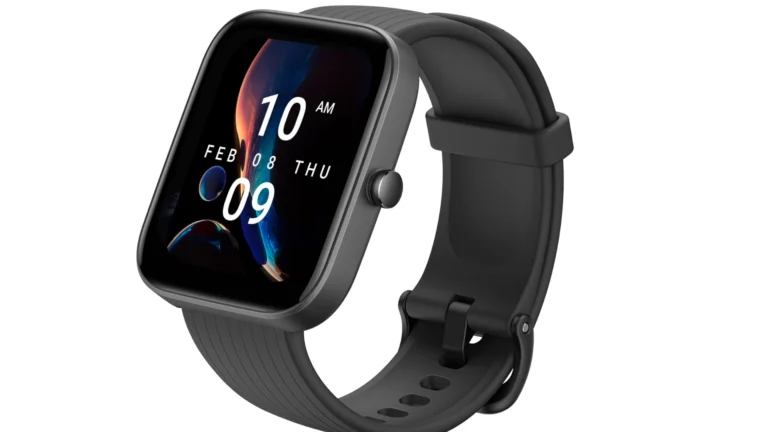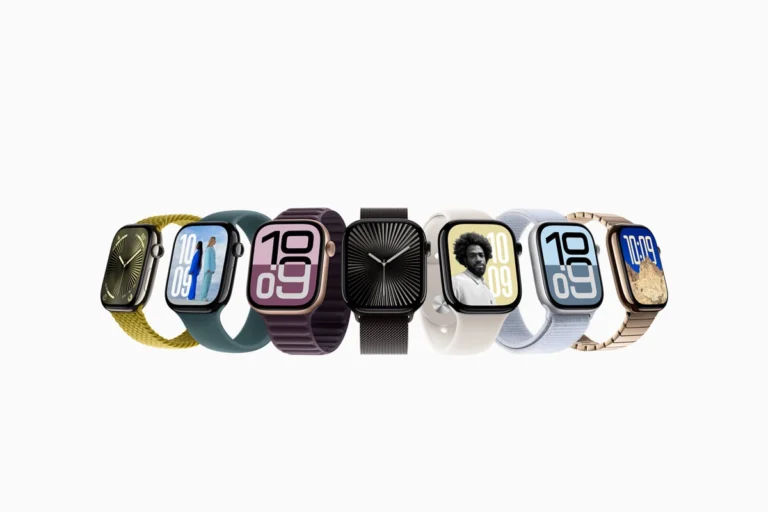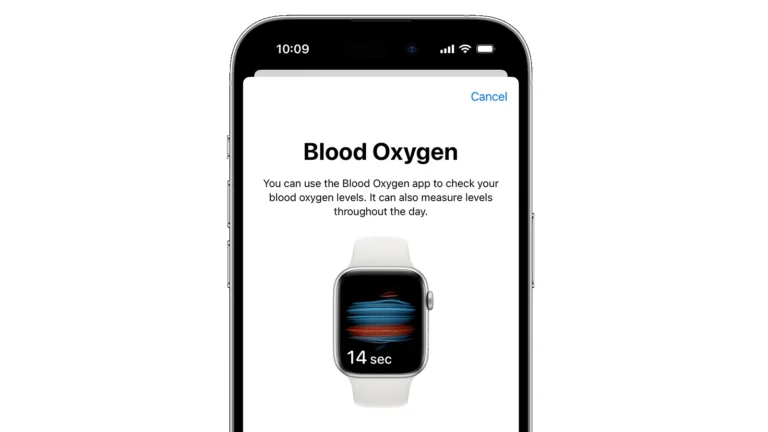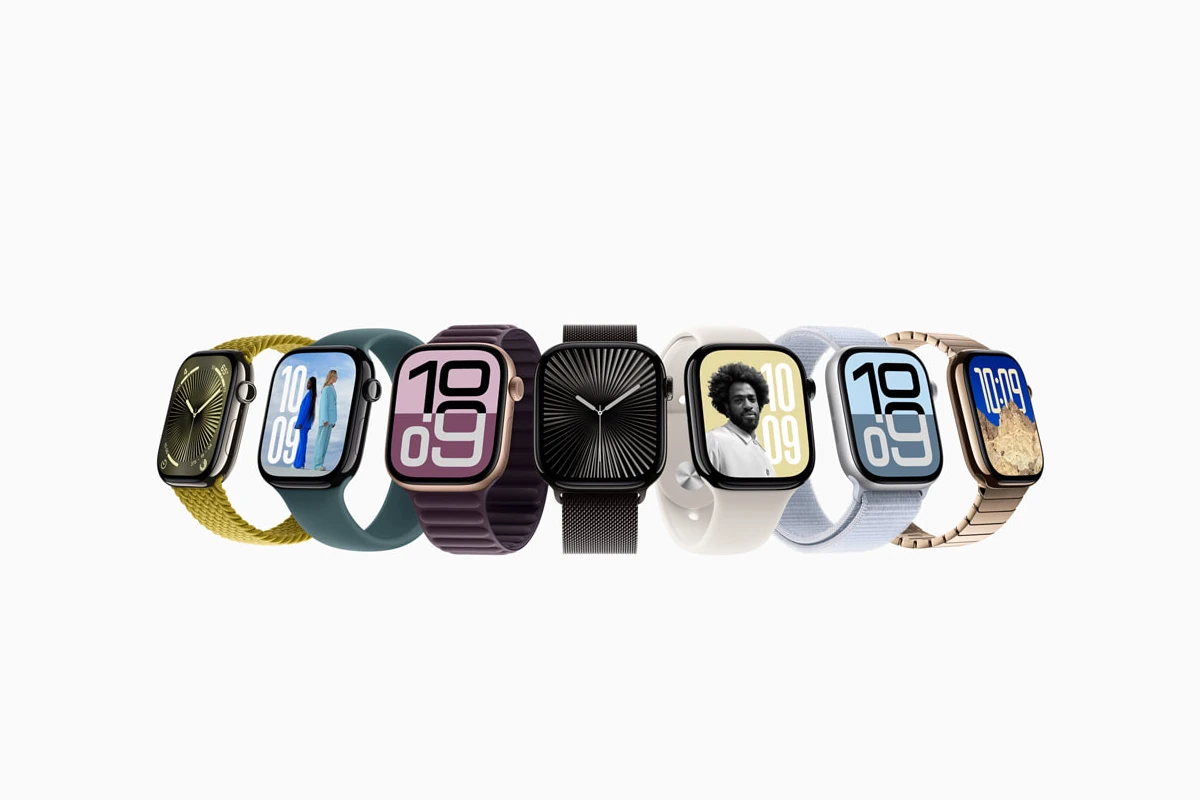
The Apple Watch has changed the smartwatch market since it first came out in 2015. It has improved a lot over the years, adding new features, better health tracking, and easier use. With the recent release of the Apple Watch Series 10, Apple is pushing the boundaries of what a smartwatch can do. This latest model introduced a new double-tap gesture and offers deeper health insights, making it even more flexible.
The Apple Watch works smoothly with iPhones and provides various features, from fitness tracking to communication. Apple has constantly improved the Watch’s abilities, launching new models with better performance, health monitoring, and design. Over the years, Apple has released different Watch series, each with unique enhancements. These updates have included larger screens, better water resistance, and advanced sensors for health tracking.
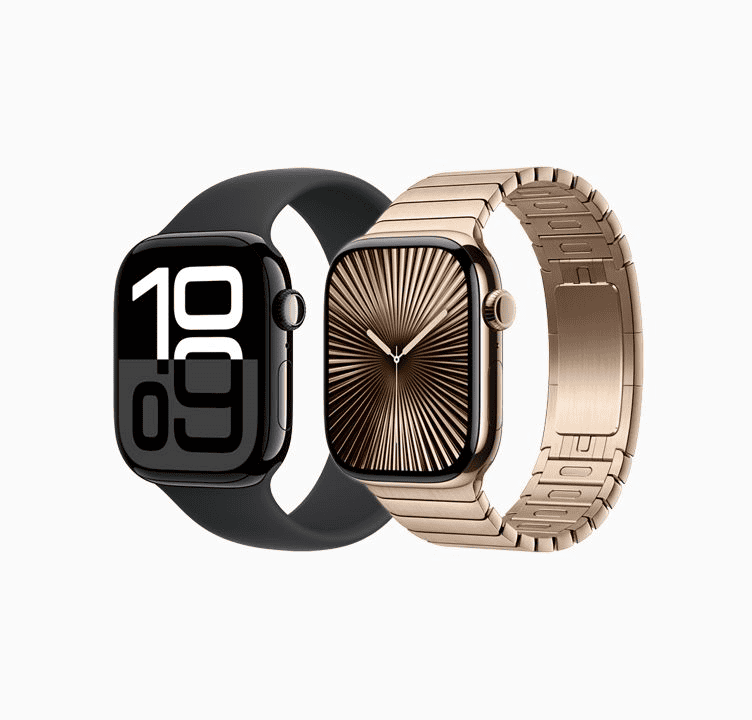
The Apple Watch has grown from a simple notification tool to a comprehensive health and fitness assistant. It can now detect falls, measure blood oxygen levels, and take ECG readings.
The Evolution of Apple Watch Generations
Apple Watch Original (2015)
Released in April 2015, the first Apple Watch introduced wearable technology to Apple fans worldwide. It featured a 38mm or 42mm display, customizable bands, and ran on the watchOS 1 operating system. The watch supported notifications, basic fitness tracking, and Siri, bringing early smartwatch convenience to users’ wrists. It set the foundation for future enhancements, combining design with basic functionality.
Apple Watch Series 1 and Series 2 (2016)
In September 2016, Apple launched Series 1 and Series 2 simultaneously. Series 1 offered a faster processor than the original model, while Series 2 introduced GPS and water resistance up to 50 meters. The Series 2 also included a brighter display, making it easier to read in sunlight. Both watches operated on watchOS 3, improving navigation and speed.
Apple Watch Series 3 (2017)
Released in September 2017, the Apple Watch Series 3 added a cellular option, allowing users to make calls and use data independently of an iPhone. With an upgraded processor, Series 3 brought improved performance and ran watchOS 4, which introduced new workout modes and better heart rate monitoring. This model’s cellular connectivity marked a major step toward independence from the iPhone.
Apple Watch Series 4 (2018)
The Series 4, launched in September 2018, featured a new, larger display with slimmer bezels, giving it a modern look. It included an electrocardiogram (ECG) sensor for heart health monitoring, which was groundbreaking at the time. With watchOS 5, users gained better workout tracking, fall detection, and walkie-talkie mode. Series 4 was a leap forward in both design and health functionality.
Table: Apple Watch Generations and Key Features
| Generation | Release Year | Key Features |
|---|---|---|
| Original | 2015 | Basic notifications, customizable bands, watchOS 1 |
| Series 1 | 2016 | Faster processor, watchOS 3 |
| Series 2 | 2016 | GPS, water resistance, brighter display |
| Series 3 | 2017 | Cellular option, enhanced performance |
| Series 4 | 2018 | Larger display, ECG sensor |
| Series 5 | 2019 | Always-on display, compass |
| Series 6 | 2020 | Blood oxygen monitoring, brighter always-on display |
| Series 7 | 2021 | Larger screen, faster charging |
| Series 8 | 2022 | Temperature sensor, crash detection |
| Series 9 | 2023 | S9 chip, improved Siri |
| Series 10 | 2024 | Enhanced health tracking, double-tap gesture |
| Series 11 | 2025* | S11 series chip |
Apple Watch Series 5 (2019)
In 2019, Series 5 introduced the always-on display, allowing users to view the time and notifications without raising their wrist. This model also featured a built-in compass and ran watchOS 6, which included more health-focused apps and the Noise app to monitor sound levels. Series 5 made the Apple Watch feel even more like a traditional timepiece with its always-on functionality.
Apple Watch Series 6 (2020)
Released in September 2020, Series 6 included blood oxygen monitoring, an advanced health feature, and a brighter always-on display for outdoor visibility. With watchOS 7, users gained access to more fitness and sleep tracking features. Series 6 continued Apple’s focus on wellness with the new sensor, while enhancing usability outdoors.
Apple Watch Series 7 (2021)
The Series 7, launched in 2021, featured a larger screen with reduced borders, creating an expansive display. It also offered faster charging, a practical upgrade for busy users. With watchOS 8, Series 7 improved cycling tracking and added mindfulness features. This model’s display changes and charging boost made it convenient for daily wear.
Apple Watch Series 8 (2022)
The Series 8 arrived in September 2022 with a new temperature sensor that enhanced cycle and wellness tracking. It introduced crash detection, which used sensors to detect severe accidents and alert emergency services. With watchOS 9, users had more workout and health features, strengthening Series 8’s position as a health-focused wearable.
Apple Watch Series 9 (2023)
In September 2023, Apple released Series 9 with an upgraded S9 chip, improving speed and battery efficiency. Siri became faster and more responsive, while watchOS 10 offered a redesigned user interface and improved widgets. Series 9 built on performance enhancements, making it a well-rounded option for most users.

Apple Watch Series 10 (2024)
Most recently, the Apple Watch Series 10 launched on September 20, 2024. It introduced a new double-tap gesture, allowing users to interact with the watch hands-free. Series 10 continued Apple’s emphasis on health, adding even more advanced tracking metrics. Running on watchOS 11, it offers the latest health and fitness monitoring capabilities alongside the streamlined double-tap control, enhancing ease of use.
The Evolution of Apple Watch Ultra Models
Apple Watch Ultra (2022)
Apple introduced the first-generation Apple Watch Ultra in September 2022, targeting athletes and adventurers with a rugged, high-end design. The Ultra featured a larger 49mm case made from titanium, offering enhanced durability for extreme environments. It came with an exclusive customizable Action button, which allowed users to launch workouts, set waypoints, or trigger the dive computer mode. The Ultra also included dual-frequency GPS for better accuracy in challenging locations and a depth gauge, making it ideal for scuba diving. It ran on watchOS 9 and featured the same temperature sensor and crash detection as the Series 8, emphasizing both fitness and safety.
Apple Watch Ultra 2 (2023)
In September 2023, Apple launched the Apple Watch Ultra 2 alongside the Series 9. In September 2024 they released a different color version of the Ultra 2 as well. The Ultra 2 retained the 49mm titanium case but brought several improvements, including a new S9 chip, providing faster performance and improved battery life. This model also introduced an updated display, offering greater brightness for readability in direct sunlight. The Action button became even more customizable, allowing users to set shortcuts for various apps and functions. Additionally, the Ultra 2 enhanced dive tracking features and included expanded altitude measurements for mountaineers. With watchOS 11, users gained access to new health metrics and refined outdoor activity tracking, making the Ultra 2 a more advanced option for extreme conditions.
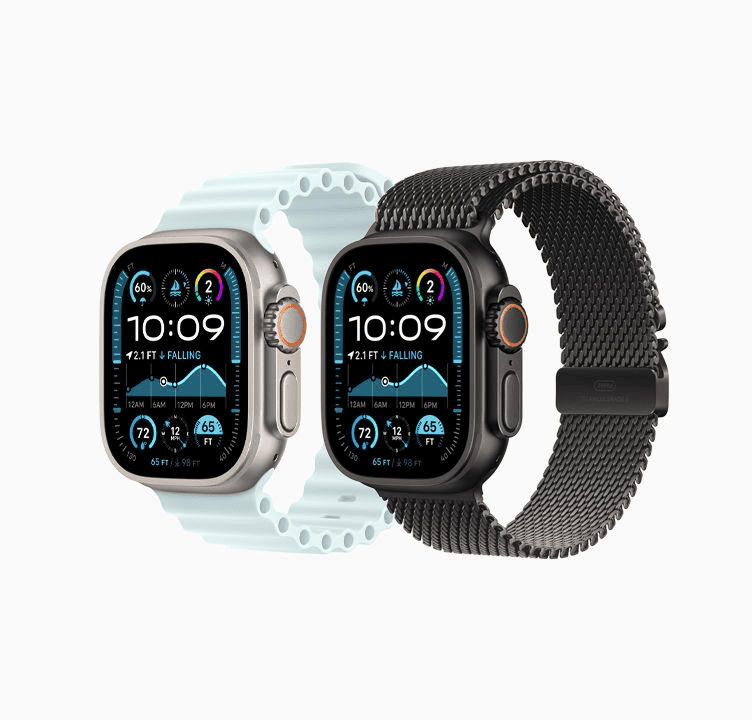
Table: Apple Watch Ultra Generations and Key Features
| Generation | Release Year | Key Features |
|---|---|---|
| Apple Watch Ultra | 2022 | 49mm titanium case, dual-frequency GPS, depth gauge, Action button |
| Apple Watch Ultra 2 | 2023 | S9 chip, brighter display, enhanced customization, improved dive tracking |
| Apple Watch Ultra 3 | 2025* | S11 chip, other enhanced features expected |
The Evolution of Apple Watch SE Models
Apple Watch SE (2020)
Apple introduced the first-generation Apple Watch SE in September 2020 as a budget-friendly option. It offered many of the core features found in the Series 6 but at a more affordable price. The SE came with the S5 chip, fall detection, and emergency SOS, but lacked advanced health sensors like the ECG and blood oxygen monitor. It featured a 40mm or 44mm display, making it ideal for users seeking the essentials without the added cost. With watchOS 7, the SE supported family setup, allowing parents to set up watches for children or older family members without an iPhone.
Apple Watch SE 2 (2022)
The second-generation Apple Watch SE, launched in September 2022, brought upgrades while maintaining its affordable positioning. This model featured the S8 chip, offering better performance compared to the original SE. It kept the same 40mm and 44mm display sizes but introduced a new, more lightweight back case design. While it still lacked advanced health sensors like the ECG, the SE 2 gained crash detection and ran watchOS 9, providing improved workout metrics and sleep tracking. It became a popular choice for those wanting core Apple Watch features without the premium price tag.
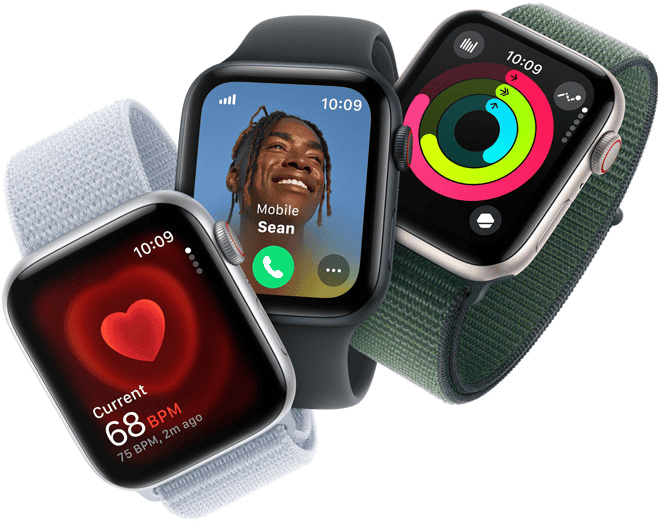
Apple Watch SE 3 (Expected 2025)
Apple is expected to introduce the Apple Watch SE 3 in September 2025, focusing on affordability and featuring a potential new rigid plastic body design. This third-generation Apple Watch SE will launch alongside the Series 11 and Ultra 3 models. The SE 3 will be equipped with either the S10 or S11 chip, which will enhance speed and improve battery life.
It is likely to be available in 40mm and 44mm sizes, targeting essential functions at a competitive price point. The SE 3 is expected to include improved fall detection and will work seamlessly with watchOS, providing a simplified yet powerful smartwatch experience. This model aims to be a reliable entry-level option for those new to Apple’s ecosystem or for anyone seeking a straightforward smartwatch.
Table: Apple Watch SE Generations and Key Features
| Generation | Release Year | Key Features |
|---|---|---|
| Apple Watch SE | 2020 | S5 chip, fall detection, 40mm/44mm display |
| Apple Watch SE 2 | 2022 | S8 chip, crash detection, updated back case design |
| Apple Watch SE 3 | 2025* | S10 or S11 chip, enhanced fall detection, new WatchOS |
Key Takeaways
- Apple Watch has become a leading smartwatch since its 2015 launch
- Each new generation brings improved features and capabilities
- The device now serves as a powerful health and fitness tool
Apple Watch Models Through the Years
Apple has launched 15 Apple Watch generations since 2014. Each year brings new features and improvements. The lineup includes standard models, SE versions, and the Ultra series. Apple’s yearly releases have expanded the watch’s capabilities and design options. The Series 10, released in 2024, marks a decade of Apple Watch innovation. Users can choose from various models to fit their needs and preferences.
Apple Watch Generations: Release Timeline
First Apple Watch – April 2015
Apple’s smartwatch journey began in 2015. The first model tracked steps and heart rate. It also let users pay with Apple Pay. This watch laid the groundwork for future versions.
Series 1 – September 2016
The Series 1 got a speed boost. It had a dual-core chip that made it much faster than the first watch. Other features stayed the same. It was a cheaper option for new buyers.
Series 2 – September 2016
Series 2 came out with Series 1. It had a brighter screen and built-in GPS. Runners could now track routes without phones. It was also water-resistant up to 50 meters.
Series 3 – September 2017
This model was a big step up. Some versions had cell service. Users could call and text without phones. The new S3 chip made it much faster than older models.
Series 4 – September 2018
Series 4 got a new look. The screen was bigger and reached closer to the edges. It could take ECG readings to check heart rhythms. This was a major health feature.
Series 5 – September 2019
The Series 5 added an always-on display. The time showed even when the wrist was down. It also got a compass app to track direction and height.
Series 6 – September 2020
Health features grew with Series 6. It could measure blood oxygen levels in seconds. Sleep tracking improved too. The screen got brighter, and it added 5GHz Wi-Fi.
SE – September 2020
The SE was a budget-friendly option. It had many Series 6 features but left out some sensors. There was no blood oxygen or ECG. It was great for those who wanted to save money.
Series 7 – October 2021
Series 7 made the screen even bigger. The bezels shrank, and the display reached the edges. It got tougher with better dust protection. Charging was faster too.
Series 8 – September 2022
Series 8 brought crash detection. It could call for help after an accident. A new sensor tracked temperature changes during sleep. This helped women track ovulation.
SE 2 – September 2022
The SE 2 updated the first SE. It got the newer S8 chip for better speed. Crash detection was added. It kept the lower price of the SE line.
Ultra – September 2022
The Ultra was made for extreme use. It worked well for divers, hikers, and athletes. The 49mm screen was the biggest yet. Battery life doubled to 36 hours. It was built to be tough.
Series 9 – September 2023
The S9 chip made Series 9 much faster. New gestures like Double Tap added control options. The screen got brighter. It could dim to 1 nit in dark rooms.
Ultra 2 – September 2022
Ultra 2 improved on the first Ultra. It doubled storage space. The screen got 50% brighter. It added on-board Siri and better GPS.
Series 10 – September 2024
Note: As of October 31, 2024, the Series 10 has not been released. Future details are speculative.
New Apple Watch Release Predictions
Apple launched the Watch Series 10 in September 2024. Details about other upcoming models remain scarce. The SE 3 and Ultra 3 are still under wraps. The Ultra 3 will likely inherit features from the Series 10 when it arrives.
Apple’s latest event showcased several new products. The company tends to release watches annually, so 2025 could bring fresh models. Potential updates may include improved health tracking, longer battery life, and enhanced display technology.
Consumers interested in new Apple Watches should keep an eye on Apple’s fall events. These typically occur in September or October. For now, the Series 10 represents the most current Apple Watch technology available.
Frequently Asked Questions
Main Features of Apple Watch Series 7
The Series 7 boasts a larger, more durable screen with slimmer borders. It charges faster and has an always-on display. New features include a full keyboard for typing and improved dust resistance. The watch runs on watchOS 8 and offers enhanced health tracking.
Apple Watch SE vs Series 7
The SE is a budget-friendly option with core features. It lacks the always-on display, ECG, and blood oxygen monitoring of the Series 7. The SE has a smaller screen and older processor. Both models offer fitness tracking, heart rate monitoring, and fall detection.
Upgrades in Apple Watch Series 9
Series 9 introduces a brighter display and a faster S9 chip. It features a new double tap gesture for one-handed use. The watch includes an updated ultra-wideband chip for improved device finding. It runs on watchOS 10 with redesigned apps and new watch faces.
Apple Watch Generations in Order
- Original Apple Watch (2015)
- Series 1 and Series 2 (2016)
- Series 3 (2017)
- Series 4 (2018)
- Series 5 (2019)
- Series 6 and SE (2020)
- Series 7 (2021)
- Series 8 and SE 2 (2022)
- Series 9 and Ultra 2 (2023)
Apple Watch Ultra 2 Distinctions
The Ultra 2 targets outdoor enthusiasts and athletes. It has a larger, brighter display and longer battery life. The watch includes a customizable Action button and advanced GPS. It offers enhanced water resistance and a rugged titanium case for extreme conditions.
Upgrades for Apple Watch Series 10
The Series 10 launched on September 20, 2024 and offers:
- Improved health sensors
- Longer battery life
- Faster processor
- New design elements
- Enhanced software features
Actual features will be confirmed upon official release.

